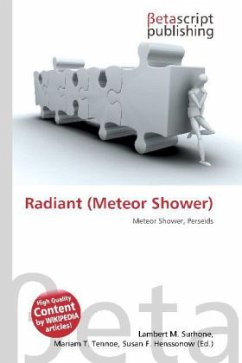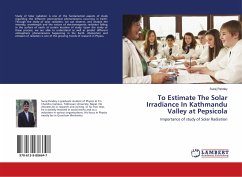
Radiant Intensity
Versandkostenfrei!
Versandfertig in 6-10 Tagen
30,99 €
inkl. MwSt.

PAYBACK Punkte
15 °P sammeln!
High Quality Content by WIKIPEDIA articles! In radiometry, radiant intensity is a measure of the intensity of electromagnetic radiation. It is defined as power per unit solid angle. The SI unit of radiant intensity is watts per steradian (W·sr 1). Radiant intensity is distinct from irradiance and radiant exitance, which are often called intensity in branches of physics other than radiometry. Electromagnetic radiation (often abbreviated E-M radiation or EMR) is a phenomenon that takes the form of self-propagating waves in a vacuum or in matter. It consists of electric and magnetic field compon...
High Quality Content by WIKIPEDIA articles! In radiometry, radiant intensity is a measure of the intensity of electromagnetic radiation. It is defined as power per unit solid angle. The SI unit of radiant intensity is watts per steradian (W·sr 1). Radiant intensity is distinct from irradiance and radiant exitance, which are often called intensity in branches of physics other than radiometry. Electromagnetic radiation (often abbreviated E-M radiation or EMR) is a phenomenon that takes the form of self-propagating waves in a vacuum or in matter. It consists of electric and magnetic field components which oscillate in phase perpendicular to each other and perpendicular to the direction of energy propagation. Electromagnetic radiation is classified into several types according to the frequency of its wave; these types include (in order of increasing frequency and decreasing wavelength): radio waves, microwaves, terahertz radiation, infrared radiation, visible light, ultraviolet radiation, X-rays and gamma rays. A small and somewhat variable window of frequencies is sensed by the eyes of various organisms; this is what is called the visible spectrum, or light.












